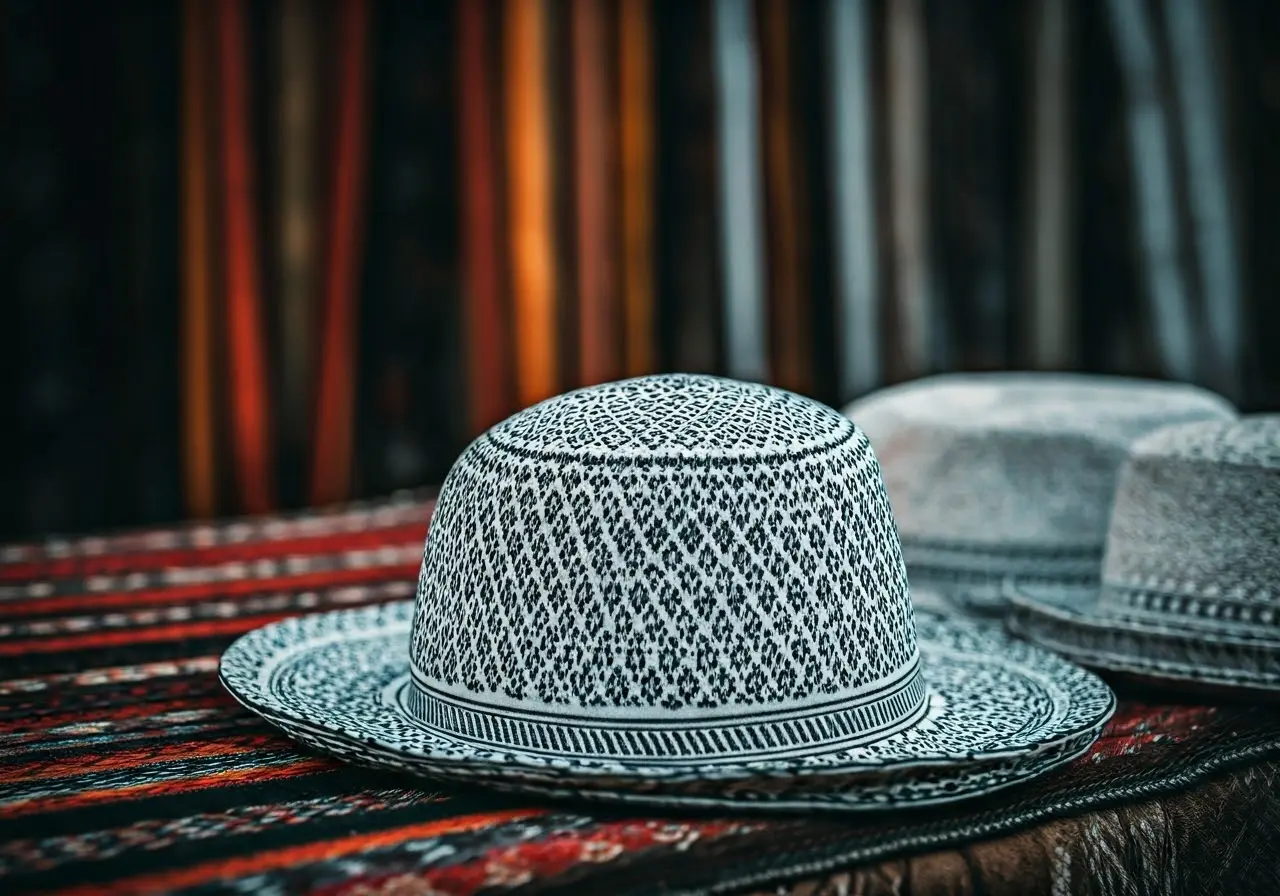The Arabic hat, a symbol of identity and cultural heritage, plays an integral role in Palestinian culture. In this blog, we will journey through the rich history of the Arabic hat and its enduring significance to the Palestinian people, from traditional craftsmanship to its modern-day symbolism.
Historical Origins of the Arabic Hat
Tracing back centuries, the Arabic hat has a long-standing presence in the region. Examining its origins reveals insights into the social and cultural dynamics of Palestinian history. Traditionally, the hat has served practical purposes, shielding its wearer from the sun’s rays in an arid climate. Historically, these hats were crafted from local materials like wool and cotton, offering durability and comfort essential for the harsh weather conditions. The styles varied widely across different regions, each reflecting local customs and preferences, which underscores the diversity within Palestinian society. From the coastal areas to the mountains, the Arabic hat’s evolution tells a story about the flow of cultures, commerce, and interactions across the Mediterranean and Middle East.
Symbolism and Meaning Within Palestinian Culture
Beyond its practical use, the Arabic hat holds symbolic meanings representing identity, resistance, and pride within the Palestinian community. This humble piece of clothing encapsulates numerous aspects of Palestinian identity, often functioning as a visual proclamation of one’s cultural allegiance. The Arabic hat is not just a piece of attire but represents a crown of resilience borne from centuries of cultural amalgamation and historical persistence. For instance, the Palestinian keffiyeh, adorned with traditional patterns, has transcended to symbolize solidarity in the quest for autonomy and justice, echoing deep-rooted sentiments.
In terms of social significance, wearing an Arabic hat often signifies belonging to the larger Arab world while simultaneously expressing regional uniqueness. It has been embraced by diverse groups to symbolize the unyielding spirit of Palestinians. Coupled with interesting facts about Palestinian Arabic, the hat strengthens individual connections to their heritage, playing a significant role in preserving cultural narratives across generations.
Craftsmanship and Design Variations
Artisans across Palestine have mastered the art of hat-making, reflecting regional diversities in design, materials, and techniques. These craftsmen bring to life the ancient art of textile work, which is often intertwined with traditional embroidery and intricate details, such as in the artistry of embroideries thoubs. The process is more than just fashioning a hat; it embodies cultural preservation, with every stitch speaking to the meticulous care invested in upholding these traditions.
Among the notable designs, the keffiyeh stands as a prominent figure. Its black-and-white pattern is recognized globally, yet the variations in colors and designs convey different messages and meanings. The Exquisite Home Decor Collection captures these traditional motifs by integrating them into modern aesthetics, which honors the past while innovating for the present.
Revival and Preservation Efforts
In an effort to preserve cultural identity, various initiatives and craftspeople strive to maintain and revive the traditional methods of creating the Arabic hat. Revival is not just a matter of craftsmanship but also involves reasserting traditional narratives and aesthetics in a rapidly modernizing world. Communities have been coming together to engage the younger generations in these age-old practices, ensuring that the skills, knowledge, and stories do not fade into obscurity. Centers like the Excellence Center in Palestine focus on educating about cultural preservation, often highlighting the significant role of attire and language in sustaining cultural identity.
The Arabic Hat in Modern Palestinian Society
While rooted in tradition, the Arabic hat continues to evolve. Exploring its place in contemporary Palestinian society reveals how it adapts to new cultural contexts. Today, many young Palestinians find creative ways to incorporate traditional attire into modern fashion, facilitating a dialogue between the past and the present. This versatility is celebrated within varied platforms, such as the Palestinian Elegance Accessories, where traditional designs meet contemporary silhouettes.
The hat’s integration into global fashion trends has helped introduce Palestinian culture to an international audience. Events, like cultural exhibitions and fashion shows, amplify this narrative, allowing the Palestinian community to share their rich heritage with the broader world. Moreover, the Arabic hat functions as a beacon of identity in diaspora communities, where donning it becomes an act of cultural affirmation and resistance against assimilation pressures.
A Timeless Emblem of Cultural Identity
The Arabic hat remains a powerful emblem of Palestinian culture and identity. As new generations embrace its profound history and symbolism, the hat serves as a timeless reminder of the deep-rooted traditions and stories that continue to shape Palestinian heritage.






